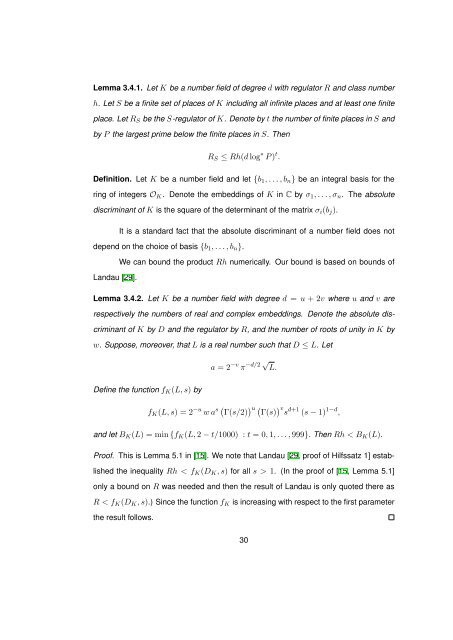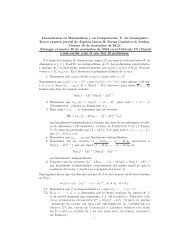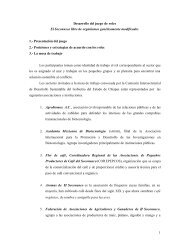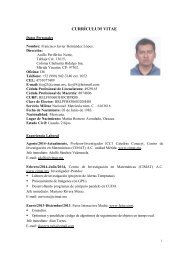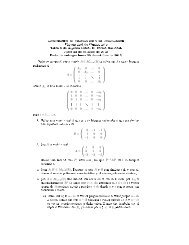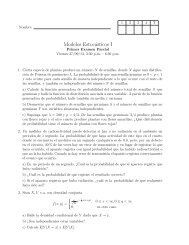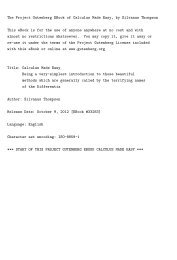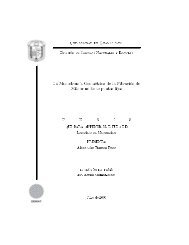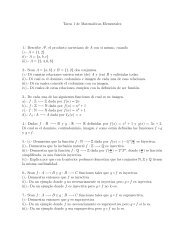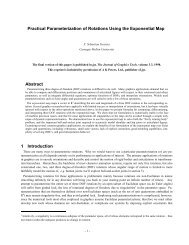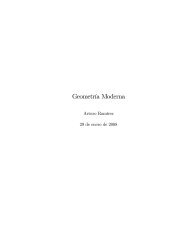S-integral points on hyperelliptic curves Homero Renato Gallegos ...
S-integral points on hyperelliptic curves Homero Renato Gallegos ...
S-integral points on hyperelliptic curves Homero Renato Gallegos ...
- No tags were found...
You also want an ePaper? Increase the reach of your titles
YUMPU automatically turns print PDFs into web optimized ePapers that Google loves.
Lemma 3.4.1. Let K be a number field of degree d with regulator R and class numberh. Let S be a finite set of places of K including all infinite places and at least <strong>on</strong>e finiteplace. Let R S be the S-regulator of K. Denote by t the number of finite places in S andby P the largest prime below the finite places in S. ThenR S ≤ Rh(d log ∗ P ) t .Definiti<strong>on</strong>. Let K be a number field and let {b 1 , . . . , b n } be an <str<strong>on</strong>g>integral</str<strong>on</strong>g> basis for thering of integers O K . Denote the embeddings of K in C by σ 1 , . . . , σ n . The absolutediscriminant of K is the square of the determinant of the matrix σ i (b j ).It is a standard fact that the absolute discriminant of a number field does notdepend <strong>on</strong> the choice of basis {b 1 , . . . , b n }.We can bound the product Rh numerically. Our bound is based <strong>on</strong> bounds ofLandau [29].Lemma 3.4.2. Let K be a number field with degree d = u + 2v where u and v arerespectively the numbers of real and complex embeddings. Denote the absolute discriminantof K by D and the regulator by R, and the number of roots of unity in K byw. Suppose, moreover, that L is a real number such that D ≤ L. Leta = 2 −v π √ −d/2 L.Define the functi<strong>on</strong> f K (L, s) byf K (L, s) = 2 −u w a s ( Γ(s/2) ) u (Γ(s)) vs d+1 (s − 1) 1−d ,and let B K (L) = min {f K (L, 2 − t/1000) : t = 0, 1, . . . , 999}. Then Rh < B K (L).Proof. This is Lemma 5.1 in [15]. We note that Landau [29, proof of Hilfssatz 1] establishedthe inequality Rh < f K (D K , s) for all s > 1. (In the proof of [15, Lemma 5.1]<strong>on</strong>ly a bound <strong>on</strong> R was needed and then the result of Landau is <strong>on</strong>ly quoted there asR < f K (D K , s).) Since the functi<strong>on</strong> f K is increasing with respect to the first parameterthe result follows.30


